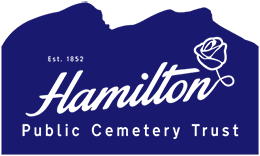However, the first Burial at the Lawn Cemetery did not take place until 13 February 1970.
This cemetery has become the main burial centre for Hamilton with over 4,500 burials taking place since the first one in 1970.
Since the Lawn Cemetery opened, the Cemetery Trust has made steady improvements to the site, including various ashes areas, a memorial only area, a shelter for inclement weather and a playground.
His grave, along with his wife, can be found at SECTION SSH (Monumental) lot 208 at the rear of the cemetery.
A statue of Ted Kenna can also be viewed in the Fitzpatrick Gardens located at the intersection of Lonsdale and Brown Streets.
Edward (Ted) Kenna was born at Hamilton, Victoria, on 6 July 1919. He completed his education in his home town before becoming a plumber. He enlisted in the Australian Imperial Force in August 1940 and served in the 23/21st Battalion in Victoria and later in the Darwin area. In June 1943 his unit returned to Victoria before being sent to Queensland. At this point the unit was disbanded and its members allotted as reinforcements to other units. Kenna was assigned to the 2/4th Battalion and embarked for New Guinea in October 1944.
On 15 May 1945, Kenna was involved in an action near Wewak, New Guinea, during which he exposed himself to heavy fire, killing a Japanese machine gun crew and making it possible for his company’s attack to succeed. For this he was awarded the Victoria Cross. Three weeks later he was shot in the mouth and spent more than a year in hospital before being discharged from the AIF in December 1946. The following year he married Marjorie Rushbury, who had nursed him at Heidleberg Military Hospital.
After his discharge from hospital, Kenna returned to Hamilton. Proud of their Victoria Cross winner, the people of the Hamilton district raised sufficient funds to build Kenna and his wife a house which remains the family home. The Kennas had four children. After the war he worked with the local council and played Australian Rules football for the local team. He has attended many Victoria Cross reunions in London and has led the annual ANZAC Day march in Melbourne. In the 1980s Kenna had his portrait painted by Sir William Dargie and in July 2000 he was featured on a postage stamp as part of an issue commemorating Australia’s living Victoria Cross winners. He died in Geelong on 8 July 2009.
Courtesy – The Australia War Memorial
